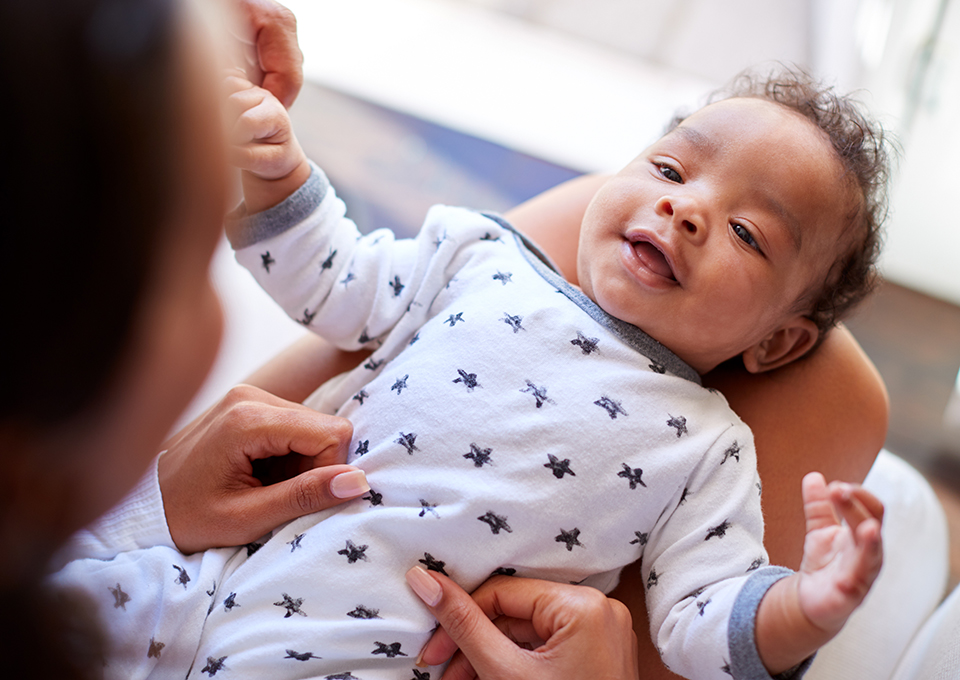
When Do Babies Smile: A Comprehensive Guide to Infant Development
The arrival of a newborn baby is a momentous occasion, filled with joy, anticipation, and a myriad of questions. Among the most common inquiries is, "When do babies smile?" This seemingly simple question delves into the fascinating realm of infant development, revealing the intricate milestones and underlying mechanisms that govern this captivating expression.
The First Smiles: A Journey of Neurological Maturation
The first smiles, known as social smiles, typically emerge between 6 and 8 weeks of age. These smiles are not reflexive, but rather intentional expressions directed towards familiar faces, particularly those of the primary caregivers. They signify the baby’s growing awareness of their surroundings and the development of social-emotional bonds.
The neurological underpinnings of social smiling involve the activation of specific brain regions, including the amygdala, which processes emotions, and the prefrontal cortex, responsible for higher-order cognitive functions. As these regions mature, the baby’s ability to recognize and respond to social cues improves, leading to the emergence of genuine smiles.
The Development of Smiling: A Gradual Progression
The progression of smiling in infants follows a predictable pattern:
-
Reflexive Smiles (0-2 months): These involuntary smiles occur during sleep or when the baby is content and well-fed. They are not directed towards specific individuals and are not considered true social smiles.
-
Social Smiles (6-8 weeks): As mentioned earlier, social smiles are intentional expressions directed towards familiar faces. They indicate the baby’s growing social awareness and emotional attachment.
-
Anticipatory Smiles (4-6 months): These smiles occur in anticipation of a pleasurable event, such as being picked up or receiving a favorite toy. They demonstrate the baby’s developing memory and ability to associate actions with outcomes.
-
Stranger Smiles (6-9 months): Around this time, babies begin to smile at unfamiliar individuals, indicating their expanding social circle and curiosity about the world around them.
-
Genuine Smiles (9-12 months): These smiles are spontaneous expressions of joy, amusement, or affection. They reflect the baby’s growing emotional intelligence and ability to engage in meaningful social interactions.
Factors Influencing Smiling Development
While the progression of smiling is generally consistent, there can be variations among infants. Several factors can influence the timing and frequency of smiles:
-
Temperament: Babies with more cheerful and outgoing temperaments tend to smile earlier and more frequently.
-
Environment: A nurturing and stimulating environment, with plenty of social interaction, can promote smiling development.
-
Health: Medical conditions or developmental delays can affect the baby’s ability to smile.
-
Individual Differences: Each baby is unique, and there is a wide range of normal variation in smiling patterns.
The Importance of Smiling
Smiling is not merely a charming expression; it plays a crucial role in infant development:
-
Social Development: Smiling facilitates social interactions, strengthens bonds with caregivers, and promotes a sense of belonging.
-
Emotional Regulation: Smiling helps babies express positive emotions, cope with stress, and regulate their moods.
-
Cognitive Development: Smiling is associated with increased attention, memory, and problem-solving abilities.
-
Physical Health: Smiling can reduce stress hormones and promote overall well-being.
Encouraging Smiling in Infants
Parents and caregivers can play an active role in encouraging smiling in infants:
-
Engage in Face-to-Face Interactions: Make eye contact, talk to the baby in a soothing voice, and smile frequently.
-
Respond to Smiles: When the baby smiles, respond with a smile, laughter, or verbal praise. This positive reinforcement will encourage them to smile more.
-
Provide a Stimulating Environment: Offer the baby a variety of toys, sounds, and experiences to stimulate their senses and promote social interaction.
-
Be Patient and Observant: Every baby is different, so be patient and observe their cues. If the baby is not smiling as frequently as expected, consult with a healthcare professional to rule out any underlying issues.
Conclusion
The emergence of smiles in infants is a captivating milestone that marks significant progress in their neurological, social, and emotional development. Understanding the typical progression of smiling and the factors that influence it can help parents and caregivers foster a nurturing environment that supports the baby’s overall well-being. By engaging in meaningful interactions, responding to smiles with warmth and affection, and providing a stimulating environment, we can encourage the development of this precious expression that brings joy to both the baby and those around them.
